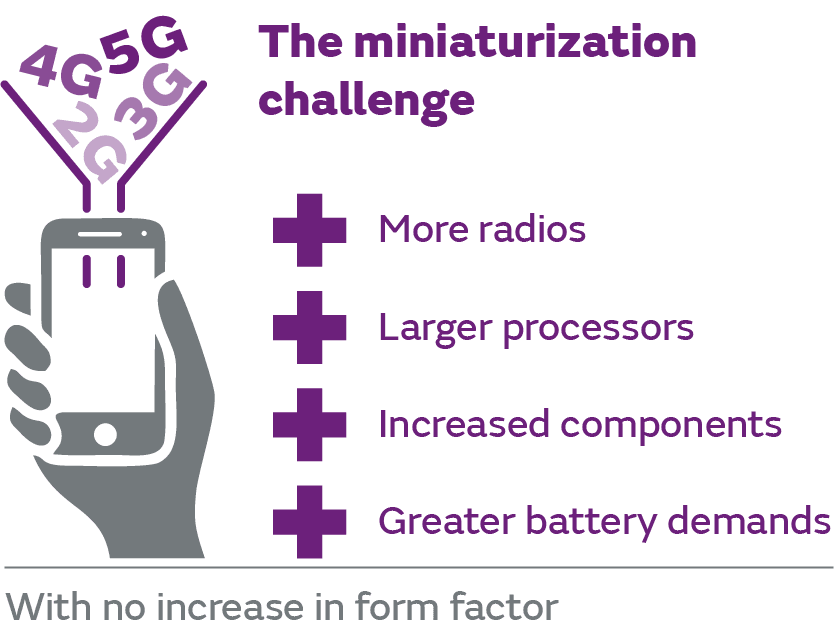5G: Technology
5G Challenge: Miniaturization
Electronics devices are likely to become more complex to satisfy consumers expectations for small or slim devices. Reliability and miniaturisation of component technology will become a necessity.
Customers have a certain standard for these devices today. We are used to having a sleek, thin design, with the screen going from edge to edge. But as we move to 5G we still have to cover 2G, 3G and 4G while also adding 5G - requiring several antennas and larger processors - and we still need to squeeze the battery in there as well. The expectation is to develop devices to fit everything in, achieve great performance, and maintain high reliability - but it could be prohibitively expensive to do this.

Given that passive components make up the greatest percentage of the physical space on the circuit board, it’s no surprise that miniaturization is the dominant trend in passive technologies. Increasingly, 5G chip manufacturers require smaller package designs that deliver the same capacitance or resistance as older and larger versions. Passives manufacturers are complying with this demand by offering extended value ranges in smaller package designs. For example, buyers can now source multilayer ceramic capacitors (MLCCs) with specs of 2.2uF capacitance and a 10 volts rating in the smaller 0201 package size versus the formerly common 0402 size.
In addition to miniaturization, passive components increasingly need to perform in harsher environments, with specifications for extreme temperatures, vibration ratings, dust and liquid resistance, etc. High-temperature capacitor technology is a growing trend, especially for ruggedized components that can withstand temperatures exceeding 392°F. Primary applications for this technology include automotive, aerospace and oil and gas.
Device challenges
- Electronic devices will be put under new strains and will require redesigning or retrofitted to ensure that they properly meet the demands of higher data-rates and power requirements.
- Electronics devices are likely to become more complex to satisfy consumers expectations for small or slim devices. Reliability and miniaturisation of component technology will become a necessity.
- Increased data rate will mean higher device temperatures - raising safety concerns - and will demand more efficient power distribution and battery life.

Watch our onDemand webinar:
5G: Managing componet-level risks to commercial success
Duration: 45 min + Q&A


